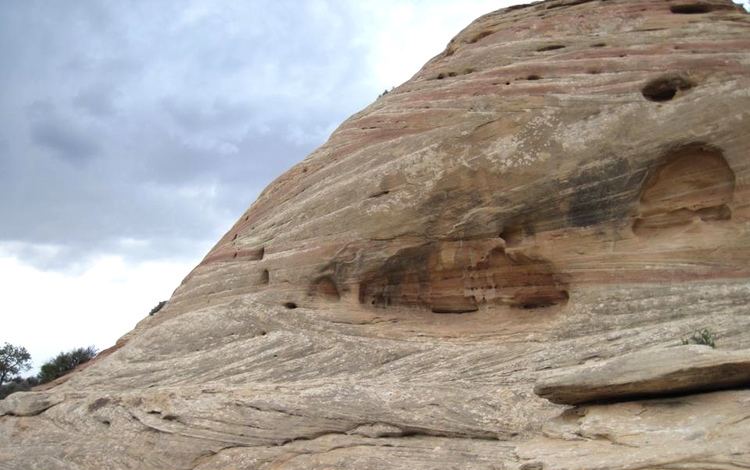Type Geological member Underlies Organ Rock Shale | Primary Sandstone | |
 | ||
Named by Arthur A. BakerJohn B. Reeside, Jr., 1929 | ||
Cedar mesa sandstone
Cedar Mesa Sandstone (also known as the Cedar Mesa Formation) is a sandstone member of the Cutler Formation, found in southeast Utah, southwest Colorado, northwest New Mexico, and northeast Arizona.
Cedar Mesa Sandstone is the remains of coastal sand dunes deposited about 245–286 million years ago, during the early Permian period. Coloration varies, but the rock often displays a red and white banded appearance as a result of periodic floods which carried iron-rich sediments down from the Uncompahgre Mountains during its formation.
Named after Cedar Mesa near the San Juan River in Utah, exposures of Cedar Mesa Sandstone form the spires and canyons found in the Needles and Maze districts of Canyonlands National Park, the inner gorge of White Canyon, and the three natural bridges of Natural Bridges National Monument.
